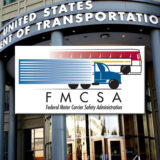FHWA report to Congress reveals conditions, performance of freight network
A new report by the Federal Highway Administration is the first to examine how infrastructure issues are impacting the nation’s new national highway freight network.
Although the Conditions and Performance Report has been issued in previous years, the most recent edition is the first to include the National Highway Freight Network. Established in the Fixing America’s Surface Transportation Act in 2015, the network replaces the Primary Freight Network and the National Freight Network, both of which were created under 2012’s Moving Ahead for Progress in the 21st Century Act.
The report was broken down into two chapters: freight transport and conditions and performance of the network.
Conditions and performance
As noted above, the Conditions and Performance Report has been conducted in the past. However, FHWA’s most recent report is the first to report on the conditions and performance of the new National Highway Freight Network, which includes nearly 47,000 interstate miles and more than 4,000 noninterstate miles. Drafts of the Primary Freight Network that was replaced by the newest network included nearly 27,000 miles of critical freight roadways.
As indicated in other reports, including the American Society of Civil Engineers’ Infrastructure Report Card, the nation’s bridges are not doing so well.
Of the 57,600 bridges along the freight network, 4.3 percent are structurally deficient. Nearly 31.5 percent of bridges on the network are 51 years old or older, and more than half are 26-50 years old. Most bridges are designed for a 50-year life span, according to the report.
That is an improvement compared with the national average of bridges on all roads. Of the 615,002 bridges throughout the U.S., nearly 9 percent are structurally deficient with nearly 40 percent older than 50 years old.
Perhaps most relevant to the trucking industry is congestion. Freight highway congestion is measured using truck probe data from more than 600,000 trucks equipped with GPS. The following are the top 10 congested freight-significant locations on the freight network in 2014:
- Atlanta: I-285 at I-85 (north)
- Chicago: I-290 at I-90/I-94
- Fort Lee, N.J.: I-95 at SR 4
- Louisville, Ky.: I-65 at I-64/I-71
- Houston: I-610 at US 290
- Houston: I-10 at I-45
- Cincinnati: I-71 at I-75
- Houston: I-45 at US 59
- Los Angeles: SR 60 at SR 57
- Houston: I-10 at US 59
FHWA also included a Travel Reliability Planning Time Index. Values greater than 1.00 indicate travel time variability. Higher numbers indicate greater variability, and the numbers after the decimal points can be seen as percentages. For example, the 2014 Travel Reliability Planning Time Index for Corridor 25 was 1.85. This means travel times were 85 percent longer on heavy travel days, compared with normal days.
According to the report, this 2017 report provides a baseline description of the current conditions and performance of the National Highway Freight Network. Future reports are expected to offer more detailed analysis of the trends and patterns in freight conditions and performance.
Freight Transportation
The FAST Act established the National Highway Freight Network to direct federal resources and policies toward improved performance of highway portions of the freight transport system. According to the report, the highway system is the most-used mode of transport for freight by both tonnage and value of goods moved.
What mode is leading the movement of goods? Trucks.
To start, trucks move 64 percent of freight by tonnage and 69 percent of freight by value, by far the single largest mode, according to the report. In 1990, the ton-miles mode share for trucks was 36.4 percent. In 2015, that share had jumped to 54.4 percent. A 1.6 percent average annual growth rate is expected from 2015 to 2040.
Total tonnage for trucking is expected to grow by nearly 45 percent by 2045 and the value of freight to increase by 84 percent. Comparatively, the weight of freight for all modes collectively is expected to increase by 40 percent, with the value forecasted to increase by 92 percent. Air freight value is expected to more than triple by 2045.
These projected increases could potentially have a severe effect on highway congestion and freight movement efficiency. Below is a map comparing the average daily long-haul freight truck traffic on the National Highway System in 2012 (on the left) to 2045 projections:
Even in employment, trucking is leading the freight industry. Trucking accounts for nearly 30.5 percent of total transportation sector employment, with truck drivers being the largest freight transport occupation with nearly 3 million drivers. About 57.5 percent of truckers operate heavy trucks and 28.2 percent drive light trucks.
Truck parking received its own section in the report. While the report highlighted that the lack of truck parking is a problem, no solutions or new information was provided. Results from the Jason’s Law survey were cited. FHWA noted that “additional analysis would be necessary to fully understand truck parking issues.”
To view the full report, click here.









